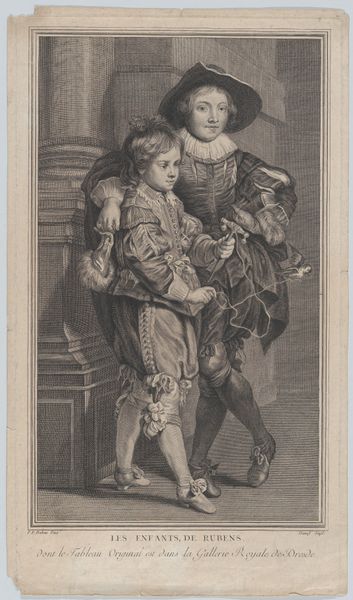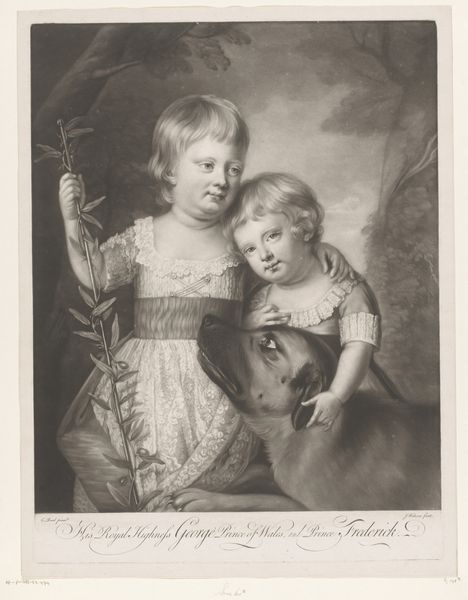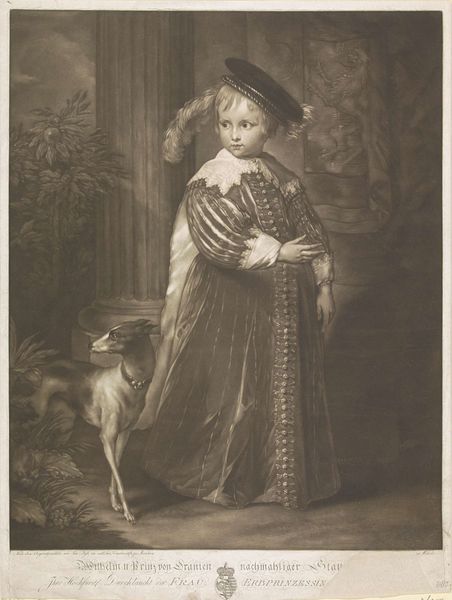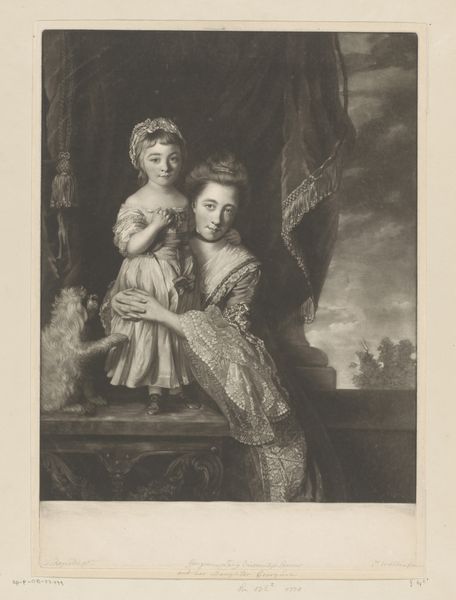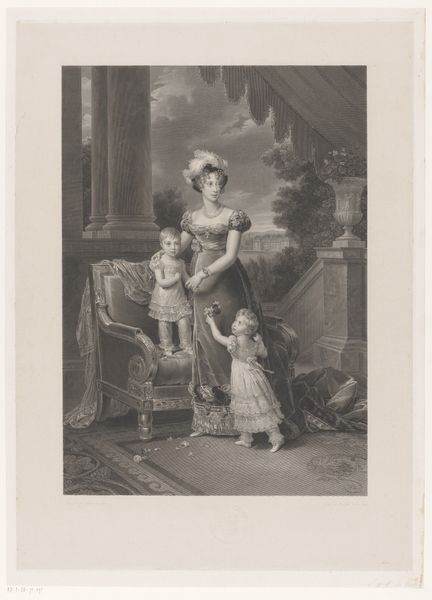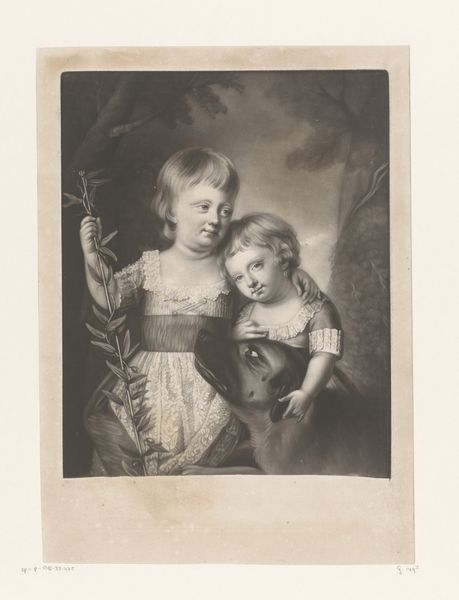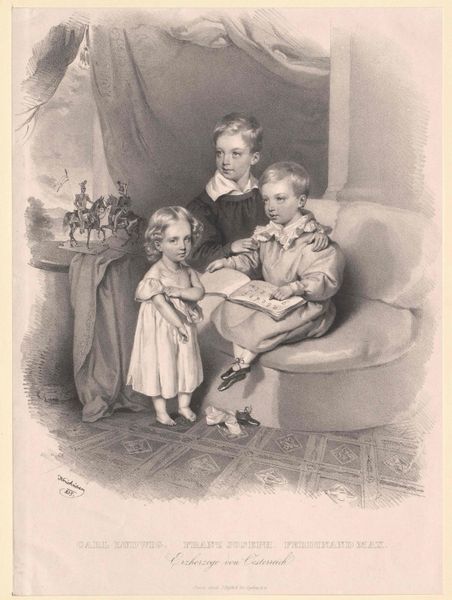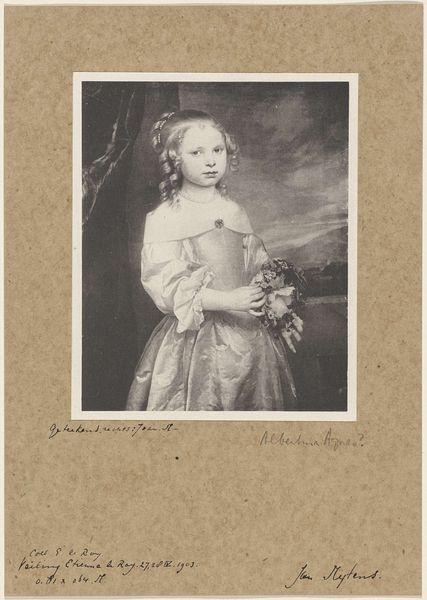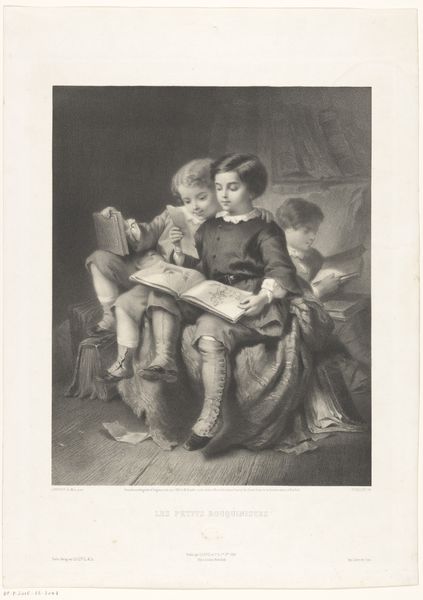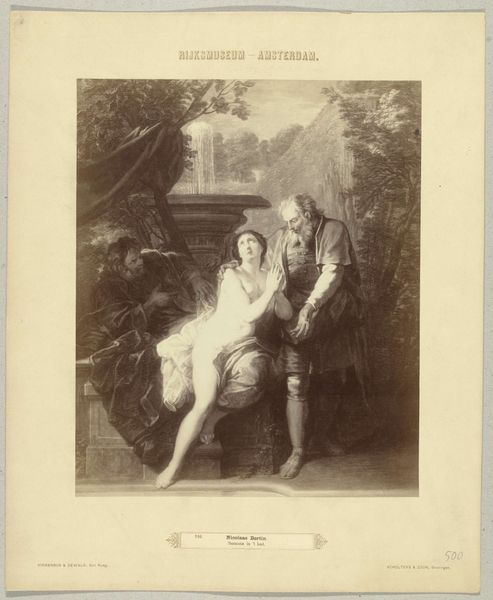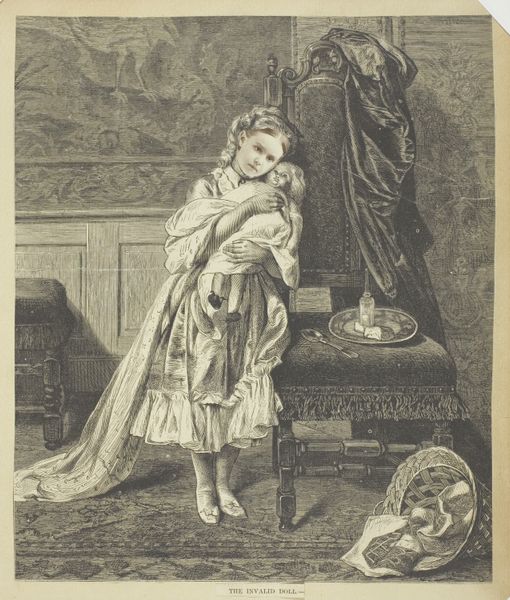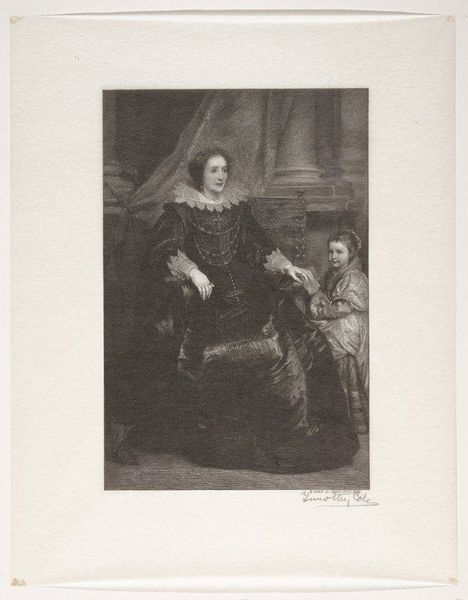
Portret van Willem, prins der Nederlanden, en Maurits, prins der Nederlanden 1847
0:00
0:00
#
portrait
# print
#
figuration
#
romanticism
#
genre-painting
#
history-painting
Dimensions: height 479 mm, width 344 mm
Copyright: Rijks Museum: Open Domain
Curator: This is a print by Gerhardus Fredericus Eilbracht, created in 1847. It's entitled "Portret van Willem, prins der Nederlanden, en Maurits, prins der Nederlanden", so a portrait of Prince William and Prince Maurice of the Netherlands. Editor: It immediately strikes me as somber, even melancholic. The young prince on the right seems lost in thought, despite the trappings of royalty surrounding him. Curator: The artist's choice of printmaking as a medium is significant. Prints allowed for wider distribution, effectively disseminating the image of the monarchy and these young heirs throughout society. What was the nature of consumption of this work? How did people interact with these printed images? Editor: Absolutely, and observe the deliberate staging. William, standing tall with the Dutch flag, projects strength and future leadership. Maurice, though, with his weary posture and naval symbols nearby, hints at the burdens of destiny. He seems less to be enjoying privilege than resigned to his future path. Curator: Notice the quality of the materials represented. Look at the fabric of their clothes, the velvet of the chair. These details were not merely decorative. Consider the factories turning out these materials, and the access afforded to royalty over commoners. Editor: The flag, of course, is powerful in its symbolism – national identity, patriotic duty, a visual reminder of their lineage and responsibilities. But it feels a bit overshadowed, almost like a stage prop. It’s more than decoration of course, with its red, white, and blue, evoking revolutionary undertones along with patriotism and power. Curator: And the toys! To us, those items would just seem historical or ornamental. In the hands of these children though, that’s where the process of material acculturation begins – reinforcing their social status and their preordained role in this hierarchical culture through this method of consumption. It creates a fascinating insight when you unpack these processes. Editor: Precisely. What a study in the psychological impact of inherited power. I hadn't considered those initial childhood years that helped craft this future ruler, where items had great significance as well as visual identity. This makes it far more evocative! Curator: Viewing the work from this perspective highlights the artist’s hand in the perpetuation of the prevailing class systems of that time, showing, that even today, we must still understand the importance that materiality had then. Editor: Yes, and recognizing how potent even the subtlest symbols can be, these children have a huge pressure that seems to even weigh heavily on their youth and demeanor.
Comments
No comments
Be the first to comment and join the conversation on the ultimate creative platform.
